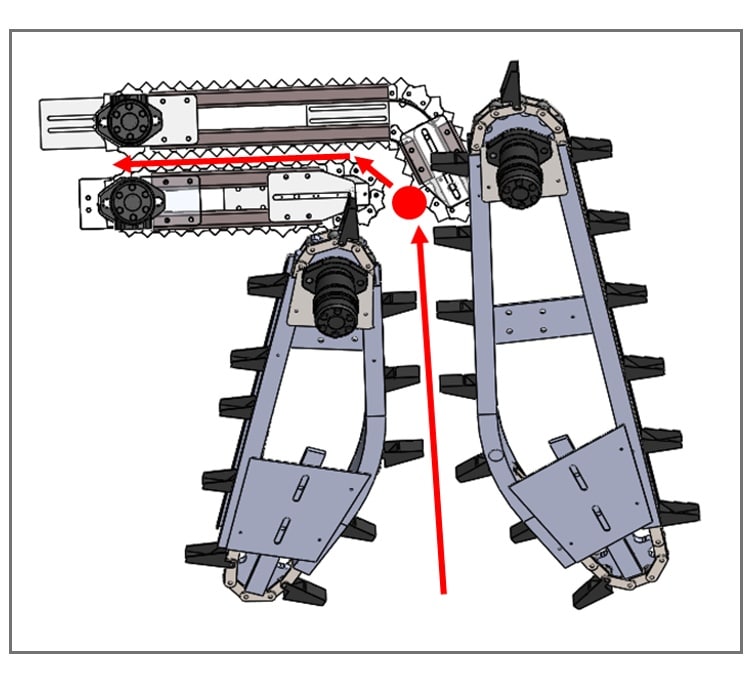Hello Everyone,
I'm Mostafa from Egypt.
I'm Working on designing a hydraulic circuit for agriculture machine.i'm not very good in hydraulic so maybe i'll ask some stupid questions!.
I want to drive 5 Hydraulic motors to give almost the same LOW speed and different torque.Well, the torque also maybe low regards of the motor specs.
i uploaded the schematic for the circuit which shows that i have 3 groups ( 1st chain - Cutter - 2nd chain ) the cutter and the 2nd chain work in the same DCV till now. anyway, how can i reach the same speed that will be almost 60 : 100 RPM to each motor and the same torque for 4 motors and different torque for the cutter.
I don't need to use any sensors or PLC systems for this. for example i'm thinking about using throttle valves for each motor or using flow dividers to divide the oil between the low torque circuit and the higher one.
So, any advises or help about this ?

I'm Mostafa from Egypt.
I'm Working on designing a hydraulic circuit for agriculture machine.i'm not very good in hydraulic so maybe i'll ask some stupid questions!.
I want to drive 5 Hydraulic motors to give almost the same LOW speed and different torque.Well, the torque also maybe low regards of the motor specs.
i uploaded the schematic for the circuit which shows that i have 3 groups ( 1st chain - Cutter - 2nd chain ) the cutter and the 2nd chain work in the same DCV till now. anyway, how can i reach the same speed that will be almost 60 : 100 RPM to each motor and the same torque for 4 motors and different torque for the cutter.
I don't need to use any sensors or PLC systems for this. for example i'm thinking about using throttle valves for each motor or using flow dividers to divide the oil between the low torque circuit and the higher one.
So, any advises or help about this ?

